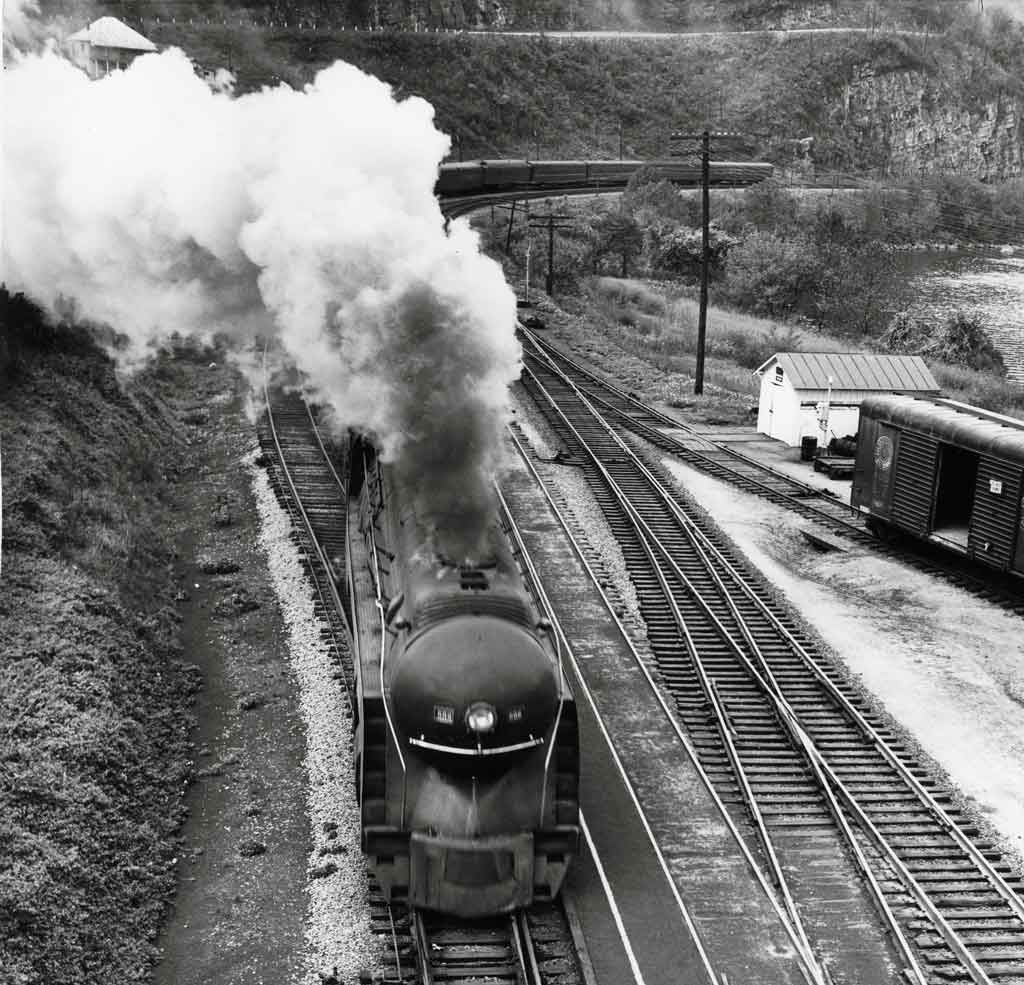Bristol, astride the Virginia-Tennessee line, was where the through passenger trains changed (“seamlessly,” they’d say today) between Southern Railway and N&W. These trains included the Birmingham–Washington Birmingham Special, the New Orleans–New York Pelican, and the aforementioned Tennesean, a Memphis–New York train.
Between Bristol and Abingdon, Va. (the eastbound Tennessean’s first scheduled stop on the N&W), lay Wyndale Hill, a broken grade varying up to 1.17 percent with a “saddle” in the top. The curves were easy, though, and after cresting the second summit of the saddle, an eastbound train took a 1.28 percent dive down a half-mile straight stretch to the last easy curves entering Abingdon.
For a class J 4-8-4, Wyndale Hill was a place to accelerate most Bristol Line passenger consists even on the uphill sides, especially No. 46 with its lightweight cars. This straight stretch down into Abingdon had a road crossing at its east end, protected by N&W’s distinctive wig-wag signals.
It happened that one fine day No. 46 rounded the curve at the top of the straight to see an old automobile standing on the track smack in the middle of the crossing, despite the wig-wags working furiously.
The engineer began his Rule 14-L whistle signal a little early, and as soon as he started the first blast, the car’s doors opened and an old man got out of the driver’s side and a little boy about 8 years old got out of the passenger side. They calmly walked back along the road a safe distance from the crossing and turned around to watch the show.
As soon as the engineer saw them get out, he put the brakes in emergency, but at the . . . er, . . . 65-mph rate of descent down that hill, the stop wasn’t going to be really quick. The J “smithereened” that auto.
After he finally got stopped, the engineer blew the requisite three shorts on the whistle and backed up to the scene. The flagman and conductor dropped off to get the information for the reports and check on the damage — total for the car, of course, and as might be expected, none to the 4-8-4. The conductor was getting all the information from the old man, and the flagman figured he should see if the little boy was injured.
“Are you OK?” the flagman asked.
“Yes sir, I’m OK,” the little boy replied.
The flagman repeated, “We want to make sure you’re not hurt; if you are, we can get you to a doctor.”
“No sir, I’m not hurt,” the boy said.
“Is that your daddy that was driving?”
“Yes sir, that’s my daddy.”
“Where were you and your daddy going?”
“We was goin’ down to Abingdon.”
“What were you going to do down in Abingdon, son?”
“We was goin’ to get us a new car as soon as 46 hit this one.”
One can only wonder how many days it took for the boy to be able to sit down again to eat his meals with the family.
First published in Spring 2007 Classic Trains magazine.
Learn more about railroad history by signing up for the Classic Trains e-mail newsletter. It’s a free monthly e-mail devoted to the golden years of railroading.















Re; The cats out of the bag. Ed King has done it again. He’s a marvelous story twllet